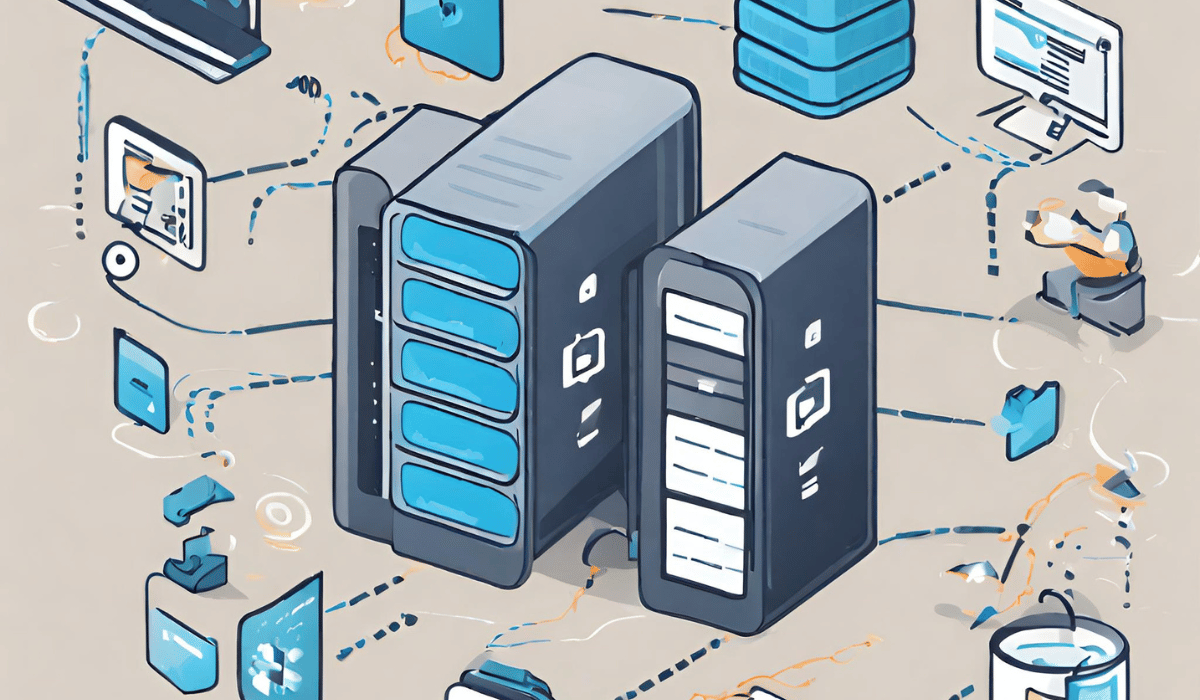To secure data at rest, it is crucial to encrypt the data, implement access controls, ensure physical security of storage devices, regularly back up the data, and securely dispose of data when no longer needed. Encryption converts data into unreadable form, access controls restrict unauthorized access, physical security measures protect storage devices, backups provide data recovery options, and secure disposal prevents potential data recovery. By following these practices, data can be effectively safeguarded from unauthorized access and potential breaches.
Securing data at rest is crucial in today’s digital landscape where cyber threats are rampant. Whether it’s sensitive personal information or critical business data, protecting it from unauthorized access is a top priority. I will explore various technologies and best practices for securing data at rest. From encryption techniques to recommended tools, you’ll gain valuable insights on how to keep your data safe.
Understanding Data Security at Rest
What is Data at Rest?
Secure data at rest refers to the practice of implementing measures and technologies to protect data that is stored or saved on storage devices from unauthorized access, theft, or other security breaches. It involves employing encryption techniques, access controls, and physical security measures to ensure the confidentiality and integrity of the data while it is not actively being used or transmitted. By securing data at rest, organizations and individuals can mitigate the risk of data breaches and safeguard sensitive information from unauthorized disclosure or misuse.
Examples Of Data At Rest
-
- Data stored on hard drives: This includes information saved on computer hard drives, external hard drives, or solid-state drives (SSDs). It can be in the form of files, documents, databases, or system backups.
- Data stored in databases: Many organizations use databases to store and manage their data. This can include customer information, financial records, employee data, inventory details, and more. The data remains at rest within the database until it is accessed or modified.
- Data stored in cloud storage: Cloud storage services like Dropbox, Google Drive, or Microsoft OneDrive allow users to store and access their data remotely. Files and documents uploaded to cloud storage remain at rest until they are accessed or downloaded by authorized users.
- Archived data: Organizations often archive old or infrequently accessed data for compliance or historical purposes. This data is typically stored on tapes, optical media, or offline storage systems and remains at rest until it is needed for retrieval.
- Virtual machine images: In virtualized environments, virtual machine images, which contain the operating system and associated data, are stored on physical servers or storage arrays. This data is considered at rest when the virtual machine is powered off or not actively being used.
- Mobile device storage: Data stored on mobile devices such as smartphones, tablets, or laptops while they are powered off or in sleep mode is also considered data at rest.
Why is Data at Rest Vulnerable?
Data at rest is vulnerable to various risks and potential consequences due to several factors:
- Unauthorized Access: If proper security measures are not in place, data at rest can be accessed by unauthorized individuals or entities. This can lead to unauthorized use, theft, or exposure of sensitive information.
- Physical Theft: Storage devices containing data at rest, such as hard drives or laptops, can be physically stolen or misplaced. If the data is not adequately protected, it can be accessed and misused by the person who obtains the physical device.
- Insider Threats: Data at rest is also susceptible to insider threats, where individuals with authorized access intentionally or unintentionally misuse or disclose sensitive information. This can occur through unauthorized sharing, copying, or unauthorized access to data stored on internal systems.
- Data Breaches: In the event of a data breach, where a cyber attacker gains unauthorized access to a system or storage infrastructure, data at rest can be compromised. This can result in the exposure of personal information, financial records, trade secrets, or other confidential data, leading to reputational damage, financial losses, legal implications, and loss of customer trust.
How To Secure Data at Rest?
Protecting data at rest is crucial to maintain its confidentiality, integrity, and availability. Here are some best practices to ensure the security of data at rest:
1. Encryption Techniques for Data at Rest
Encryption is the process of encoding data to make it unintelligible to unauthorized individuals. It provides an additional layer of protection even if the storage device is compromised. Common encryption algorithms used for data at rest include the Advanced Encryption Standard (AES), which is widely recognized as a strong and secure encryption method.
There are two types of encryption:
- Symmetric Encryption: In this method, the same key is used for both encryption and decryption. It is efficient for large-scale data encryption but requires securely sharing the key.
- Asymmetric Encryption: This method uses a pair of keys: a public key for encryption and a private key for decryption. It ensures secure communication and eliminates the need to share the private key.
2. Implementing Access Controls
- Role-Based Access Control (RBAC): Implement RBAC to control access to data at rest based on users’ roles and responsibilities within the organization. It helps enforce the principle of least privilege, ensuring that users only have access to the data necessary for their tasks.
- User Authentication Methods: Strong authentication methods, such as complex passwords, multi-factor authentication (MFA), and biometric authentication, add an extra layer of security to prevent unauthorized access.
- Limit Access Privileges: Grant access privileges only to authorized individuals who require access to the data. Regularly review and update access permissions to ensure they align with the current needs of the organization.
3. Physical Security Measures
- Secure Physical Storage Devices: Protect physical storage devices, such as servers, hard drives, or backup tapes, from theft or unauthorized access. Implement measures like locked cabinets, restricted access areas, and surveillance systems to safeguard the storage infrastructure.
- Data Storage Location: Choose secure data storage locations, such as data centers or server rooms, that provide physical security features, including access controls, environmental monitoring, and backup power systems.
4. Regular Data Backup

- Data backup is crucial for disaster recovery and ensuring the availability of data in case of accidental deletion, hardware failure, or data corruption.
- Implement a regular backup strategy that includes scheduled backups, incremental backups, and differential backups. This helps minimize data loss and ensures a more efficient restoration process.
- Store backups securely, preferably off-site, to protect against physical damage or loss due to incidents like fires, floods, or theft.
5. Secure Disposal of Data
- Properly disposing of data is essential to prevent unauthorized access to sensitive information.
- Use secure data erasure techniques, such as overwriting data with random patterns or using specialized software tools to ensure data cannot be recovered.
- For physical storage devices, consider physical destruction methods like shredding or degaussing to render the data irretrievable.
- Improper data disposal can lead to data breaches or privacy violations, so it is important to follow proper disposal procedures and comply with applicable regulations.
By following these best practices, organizations and individuals can enhance the security of data at rest, minimize the risk of data breaches, and maintain the confidentiality and integrity of their valuable information.
What Encryption Protects Data at Rest?

1. Full Disk Encryption
- Full Disk Encryption (FDE) is a data protection technique that encrypts the entire storage device where data is stored, ensuring that all data at rest remains secure.
- FDE works by encrypting the entire contents of the storage device, including the operating system, applications, and user data.
- This encryption ensures that if the storage device is lost, stolen, or accessed by unauthorized individuals, the data remains inaccessible without the encryption key.
- Full Disk Encryption is supported by various platforms and tools. One widely used tool is Windows BitLocker, which is built into the Windows operating system.
- Windows BitLocker provides an easy-to-use solution for encrypting entire disk volumes, protecting data at rest on Windows-based systems.
- With Full Disk Encryption, even if an unauthorized user gains physical access to the storage device, they cannot access or read the data without the encryption key.
2. File-Level Encryption
- File-Level Encryption provides selective protection by encrypting individual files or folders, rather than encrypting the entire storage device.
- With file-level encryption, you can choose specific files or folders to encrypt, allowing for more granular control over the protection of sensitive data.
- Encrypted files or folders are decrypted only when accessed by authorized users with the correct encryption key.
- File-level encryption can be achieved using various tools and software available in the market. One such example is AxCrypt, a user-friendly encryption software.
- AxCrypt allows users to encrypt individual files or folders with strong encryption algorithms, such as AES (Advanced Encryption Standard).
- Encrypted files can be securely shared or stored on different storage devices, providing an extra layer of protection for sensitive data at rest.
Strengthening Data Protection with Analytics
1. Data Loss Prevention (DLP) Solutions
- Data Loss Prevention (DLP) solutions play a crucial role in protecting data at rest by identifying and preventing data leakage or unauthorized access attempts.
- DLP solutions help organizations monitor, control, and protect sensitive data from being accessed, used, or transmitted inappropriately.
- These solutions use a combination of technologies, such as content inspection, contextual analysis, and user behavior monitoring, to detect and prevent data breaches or unauthorized data transfers.
- By implementing DLP solutions, organizations can enforce data security policies, prevent accidental or intentional data leaks, and ensure compliance with regulatory requirements.
2. Intrusion Detection and Prevention Systems (IDPS)
- Intrusion Detection and Prevention Systems (IDPS) are critical components of data protection strategies, including safeguarding data at rest.
- IDPS systems continuously monitor network traffic and system logs to detect and mitigate attacks targeting data stored on various storage devices.
- These systems employ various techniques, including signature-based detection, anomaly detection, and behavior analysis, to identify potential threats to data at rest.
- Real-time monitoring and response capabilities of IDPS systems enable organizations to promptly identify and mitigate security incidents, reducing the risk of data compromise.
3. Security Information and Event Management (SIEM)
- Security Information and Event Management (SIEM) tools provide centralized data monitoring, log management, and threat detection capabilities.
- SIEM solutions collect and analyze security logs and events from various sources, including data storage systems, network devices, and applications.
- By correlating and analyzing security events in real-time, SIEM tools can identify potential security incidents and generate alerts for further investigation.
- SIEM enables organizations to detect unauthorized access attempts, unusual user behavior, and other suspicious activities targeting data at rest.
- These tools provide insights into the security posture of the organization’s infrastructure, enabling proactive security measures to protect data at rest effectively.
By leveraging analytics and advanced technologies, organizations can strengthen data protection and enhance their ability to detect and respond to potential threats to data at rest. Implementing DLP solutions, IDPS systems, and SIEM tools empowers organizations to proactively monitor and protect sensitive data, mitigating the risk of data breaches and unauthorized access attempts.
Importance Of Securing Data At Rest

The importance of securing data at rest cannot be overstated. Here are some reasons why it is crucial:
- Confidentiality: Data often contains sensitive information, such as personal identifiable information (PII), financial records, or intellectual property. Securing data at rest ensures that only authorized individuals or systems can access and decrypt the information, preserving its confidentiality.
- Compliance Requirements: Many industries and jurisdictions have specific data protection regulations and compliance standards, such as the General Data Protection Regulation (GDPR) or the Health Insurance Portability and Accountability Act (HIPAA). Implementing security measures to protect data at rest is essential for meeting these requirements and avoiding potential legal and financial penalties.
- Data Integrity: Securing data at rest helps maintain its integrity. By implementing measures such as checksums or digital signatures, any unauthorized modifications or tampering with the data can be detected, ensuring its reliability and accuracy.
- Mitigating Data Breach Risks: Protecting data at rest reduces the risk of data breaches. By employing encryption, access controls, and other security measures, even if unauthorized access or theft of storage devices occurs, the encrypted data remains unintelligible and unusable to unauthorized individuals.
- Trust and Reputation: Data breaches can severely damage an organization’s reputation and erode customer trust. By implementing robust security measures to protect data at rest, organizations demonstrate their commitment to safeguarding sensitive information, enhancing trust among customers, clients, and stakeholders
Key Points:
- Data at rest refers to stored data, while data in transit is data being transmitted.
- Encryption is a key technique for securing data at rest, with AES being a recommended algorithm.
- Access controls, physical security measures, and regular backups are essential for data protection.
- Data loss prevention, intrusion detection systems, and security information and event management enhance data protection.
- Full disk encryption encrypts the entire storage device, while file-level encryption offers selective protection.
- Regularly updating and reviewing security measures is crucial for staying ahead of emerging threats.
FAQs
Q1: What is the difference between data at rest and data in transit?
Data at rest refers to data that is stored or saved on storage devices, while data in transit refers to data being transmitted over networks or the internet.
Q2: What is the recommended encryption algorithm for securing data at rest?
The Advanced Encryption Standard (AES) is widely recognized and recommended for securing data at rest. It offers strong encryption and is supported by various platforms and tools.
Q3: How can I encrypt individual files or folders for selective protection?
File-level encryption allows you to encrypt specific files or folders rather than encrypting the entire storage device. Tools like AxCrypt provide easy-to-use file-level encryption capabilities.
Q4: How does full disk encryption work?
Full disk encryption ensures that all data stored on a storage device is encrypted. It encrypts the entire disk, including the operating system and boot files. Windows BitLocker is a commonly used tool for full disk encryption.
Conclusion
Securing data at rest is a critical aspect of data protection in the digital age. By implementing encryption techniques, and access controls, and leveraging advanced analytics solutions, you can significantly reduce the risk of data breaches and unauthorized access. Remember to regularly update and review your security measures to stay ahead of emerging threats. With the right tools and best practices in place, you can ensure the confidentiality and integrity of your data.
